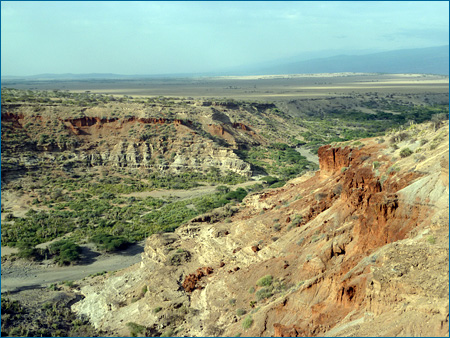Straightening out the details of ancient crocodile attacks has important implications for our understanding of life at Olduvai. As Jackson explains, “We have two individuals, of about the same age and size, both of them chewed by crocodiles on their left leg. The proximal part of the tibia also has evidence of gnawing by a leopard-sized carnivore, so that poor guy maybe was caught by a leopard and then the crocodile pulled him into the water, or the croc might have been feeding on the guy, shook part of him free, and the leopard came and grabbed his leg. Plus, we’ve got a skull bone and jawbone with more leopard marks on it. Basically, this would have been a really dangerous area for hominids to live in.”

It’s clear from the geologic context, types of fossils found, and taphonomic signs of predation that the parts of Olduvai where hominid fossils and stone tools have been found were wetland areas that attracted a wide variety of predators in addition to hominids. The Leakeys and other anthropologists have hypothesized that these areas represented long term campsites for early hominids, but Jackson’s results suggest to him that these sites were not inhabited by a full social group for days or weeks on end: “If you were there, where would you put your camp? Where would you choose to live and sleep? Very close to the lake used by hippos and crocodiles? Or away by the trees where it’s safe — but is a short enough distance away that you can go to the pool, exploit its resources, and come back?” It now seems more likely that hominids like H. habilis didn’t actually live in these hypothetical home bases, but repeatedly visited the area, probably to get fresh water, forage, and scavenge on the kills of other predators, which would then be butchered and taken back to the home base at some as-yet-undiscovered location. Carefully attending to taphonomic details critically shapes our understanding of ancient ecosystems and of the behaviors of now extinct organisms.
